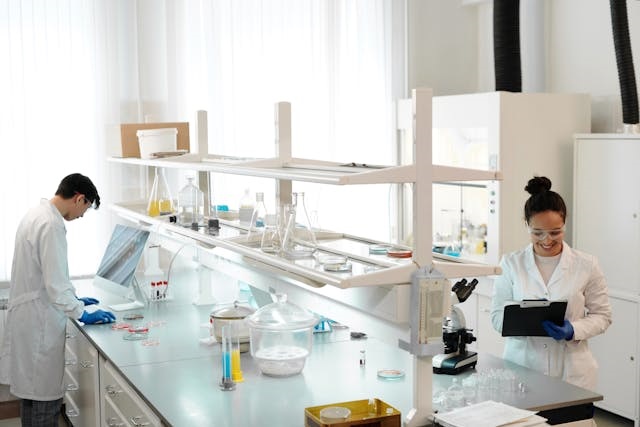In today’s world, industries face increasing scrutiny from both regulatory bodies and the public regarding their environmental impact. Whether it’s emissions, waste disposal, or chemical usage, businesses are under constant pressure to ensure that their operations meet environmental standards. One of the key ways to achieve this is through environmental testing, which plays a crucial role in industrial compliance.
Environmental testing involves the analysis of various environmental media—such as air, water, soil, and noise—to assess whether industrial activities are conforming to legal and regulatory requirements. This testing not only helps in maintaining compliance but also promotes sustainability and the responsible management of natural resources.
Ensuring Compliance with Environmental Regulations
Environmental regulations are established by national, regional, and international bodies to safeguard human health and the environment. These regulations cover a broad spectrum, including air quality standards, water contamination limits, waste management practices, and the proper handling of hazardous materials. The purpose of these regulations is to prevent harm to ecosystems and communities, ensuring that industrial activities do not lead to pollution, degradation of natural resources, or violations of public health.
Environmental testing serves as a primary tool for measuring whether an industrial operation meets these legal obligations. By testing emissions, effluents, or runoff, companies can identify any potential violations before they result in fines or sanctions. For instance, testing the concentration of particulate matter (PM) in industrial exhaust gases ensures that companies comply with air quality standards. Likewise, water testing for chemicals like heavy metals, pH levels, or bacterial contamination is crucial for industries that discharge wastewater into natural water bodies.
Identifying and Mitigating Environmental Risks
Environmental testing is also vital for identifying potential environmental risks before they escalate. Many industrial processes generate waste or by-products that can have unintended consequences for the environment if not properly managed. For example, manufacturing facilities may release volatile organic compounds (VOCs) into the air, which contribute to smog and pose health risks. By regularly monitoring the air quality around their operations, businesses can detect these pollutants early and take corrective measures, such as improving filtration systems or altering production processes to reduce emissions.
Similarly, industries that use hazardous chemicals, such as those in the pharmaceutical, chemical, and mining sectors, need to regularly test soil and water for potential contamination. This can help mitigate the risk of long-term environmental damage and prevent incidents that could affect surrounding communities or wildlife. Timely environmental testing enables companies to address these risks proactively, reducing the likelihood of environmental disasters.
Improving Sustainability Practices
Beyond regulatory compliance and risk mitigation, environmental testing also plays a key role in enhancing a company’s sustainability efforts. By providing precise data on environmental impacts, testing allows businesses to make informed decisions about reducing their ecological footprint. For instance, testing the energy efficiency of industrial operations and the associated emissions can guide efforts to implement greener technologies or shift to renewable energy sources.
Additionally, regular testing allows companies to track their progress over time. By continuously monitoring environmental factors, companies can assess whether their sustainability initiatives—such as waste reduction programs, water conservation efforts, or recycling processes—are achieving the desired outcomes. Moreover, environmental testing data can be shared with stakeholders, including investors, customers, and the general public, to demonstrate a commitment to sustainability and environmental responsibility.
Enhancing Corporate Reputation and Marketability
In an era where environmental stewardship is a key factor in consumer and investor decision-making, companies that demonstrate a commitment to environmental compliance and sustainability are better positioned in the marketplace. Regular environmental testing and transparent reporting help build a strong reputation for corporate responsibility, which can lead to competitive advantages.
For example, companies that adhere to stringent environmental standards may qualify for certifications such as ISO 14001, a widely recognized standard for environmental management. These certifications not only enhance a company’s image but also provide assurance to customers that they are purchasing products or services from an environmentally conscious provider. Furthermore, investors are increasingly prioritizing companies with robust environmental, social, and governance (ESG) practices, and regular environmental testing is a critical component of meeting these criteria.
Future Outlook: The Growing Importance of Environmental Testing is expected to grow as environmental regulations become more stringent and the public’s demand for corporate responsibility intensifies. With the rise of climate change concerns and the global push for sustainability, industries must adapt to new challenges. This includes testing for emerging pollutants, such as microplastics or pharmaceuticals, and using advanced technologies like remote sensing, real-time monitoring systems, and artificial intelligence to better predict and mitigate environmental impacts.
Environmental testing is indispensable for industrial compliance. It not only helps businesses meet regulatory requirements but also ensures the sustainable use of natural resources, reduces environmental risks, and bolsters corporate reputation. As the regulatory landscape and public expectations evolve, environmental testing will remain a cornerstone of responsible industrial operations, enabling companies to navigate the complex intersection of business and environmental stewardship.


Leave a Reply